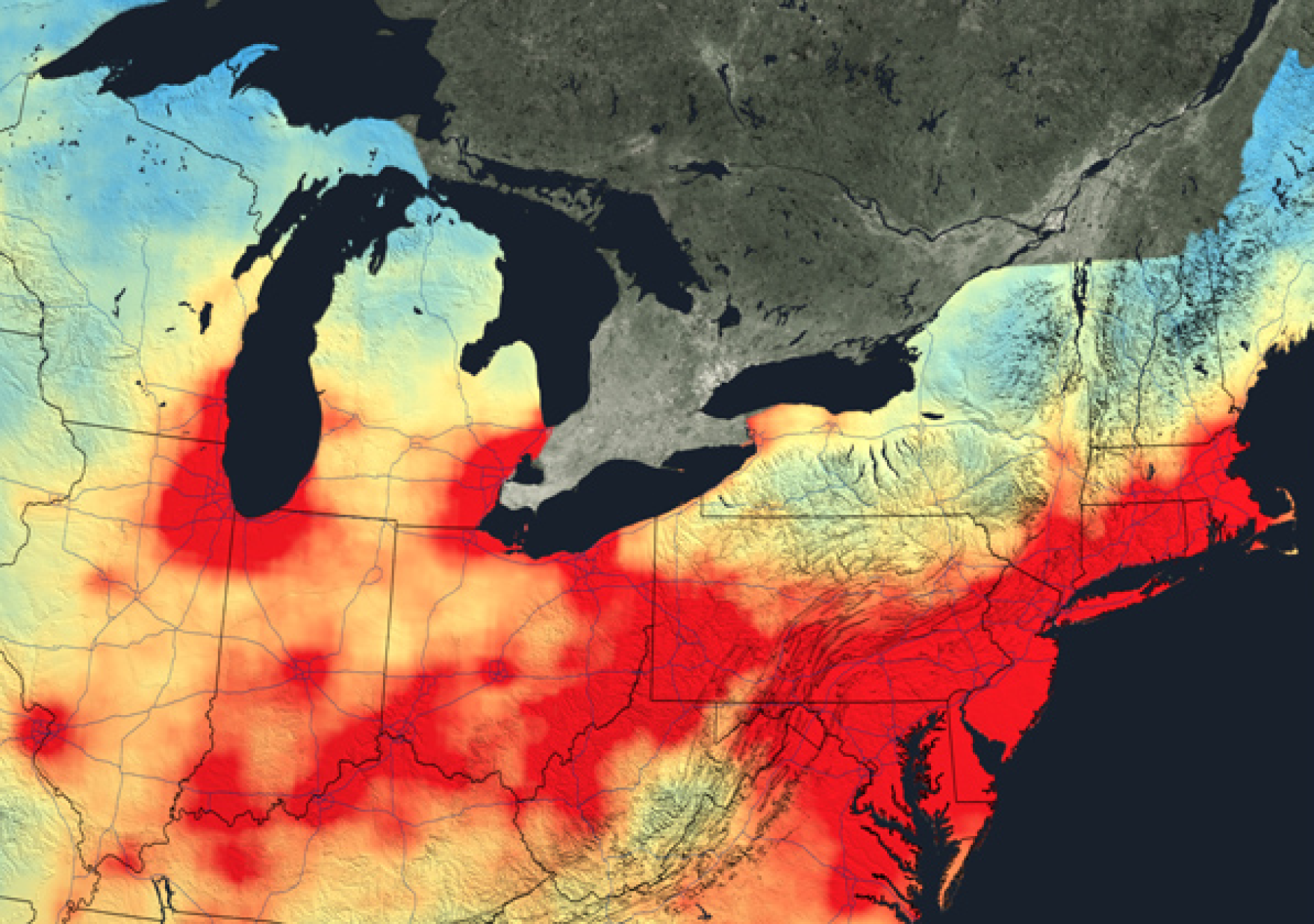Satellite images from NASA and other government agencies can tell us a lot about the changing of the climate as well as the environment. Their photo series State of Flux: Images of Change depicts noticeable differences in our world over various spans of time–looking at everything from water, air, natural disasters, as well as the impact of industry.
Here’s a few takeaways from these images that highlight West Virginia:
Air Pollution Down in West Virginia
Air pollution was down from 2005 to 2011 in the United States’ large northeast cities but also across states like West Virginia. The images from NASA show a decrease in nitrogen dioxide (NO2), which is depicted in each image as red. According to NASA, NO2 can cause “respiratory problems, contribute to the formation of other pollutants, and serve as a proxy for air pollution in general.”
Here NASA explains the reduction of NO2 and, thus, a reduction in air pollution in large U.S. cities as well as West Virginia:
"Thanks to regulations, technology improvements and economic changes, air pollution — including NO2 — has decreased despite an increase in population and number of cars on the roads. These images represent the improvement seen in the northeast corridor of the U.S., from Boston to Richmond, where some of the largest absolute changes in NO2 have occurred."
West Virginia Saw a Major Increase in Surface Mining, Mountaintop Removal
According to the West Virginia Office of Miners’ Health Safety and Training, there are 200 surface mines currently permitted to operate in the state.
Satellite images from NASA show surface mining in West Virginia increased significantly between 1987 and 2011. These photos (taken by the Thematic Mapper sensor onboard Landsat 5 from the U.S. Department of the Interior’s U.S. Geological Survey) detail an area just north of Webster Springs.
Here NASA details the impact of surface mining and mountaintop removal on the environment and human health:
"More than half of the U.S.' electrical power comes from coal burning and a large percentage of that coal comes from West Virginia. Of the nearly 150 million tons of coal extracted each year from the state's mines, an increasing amount (60 million tons in 2009) comes from surface mining and mountaintop removal. Mountaintop removal can have serious impacts on the health of local people — through the pollution of groundwater by mine runoff and exposure to airborne toxins and dust — and on the environment — through permanent loss of critical ecosystems, destruction of forests and loss of streams. Scientific evidence suggests that these impacts are pervasive and irreversible and that efforts to reclaim the disturbed land can't make up for the impacts felt by the mining process."




















